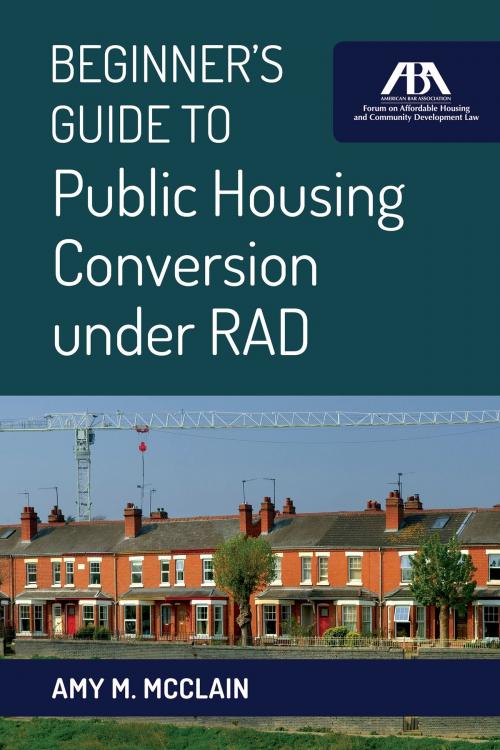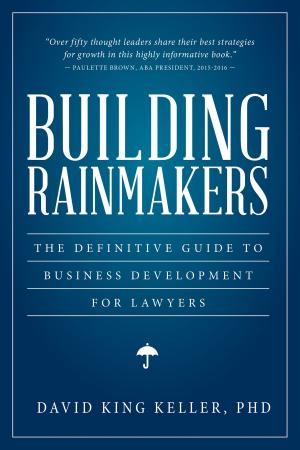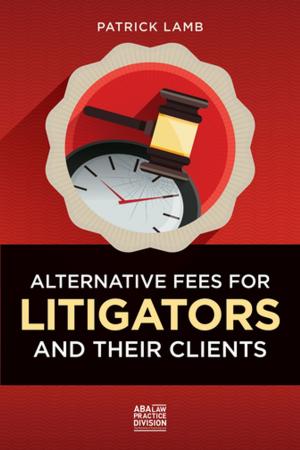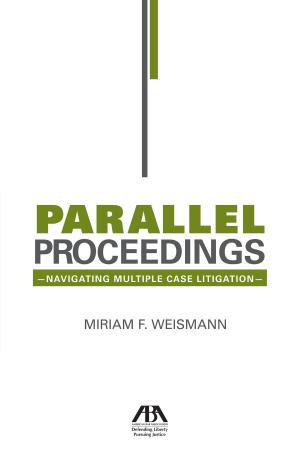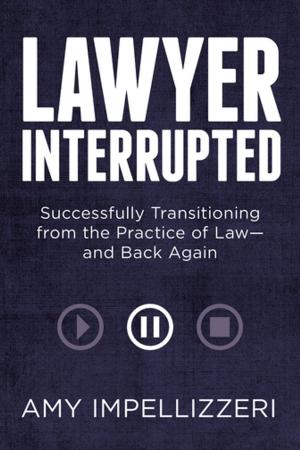Beginner's Guide to Public Housing Conversion under RAD
Nonfiction, Reference & Language, Law, Housing & Urban Development, Real Estate, Business & Finance, Finance & Investing| Author: | Amy M. McClain | ISBN: | 9781627227506 |
| Publisher: | American Bar Association | Publication: | June 7, 2015 |
| Imprint: | American Bar Association | Language: | English |
| Author: | Amy M. McClain |
| ISBN: | 9781627227506 |
| Publisher: | American Bar Association |
| Publication: | June 7, 2015 |
| Imprint: | American Bar Association |
| Language: | English |
The U.S. Department of Housing and Urban Development (HUD) initiated the Rental Assistance Demonstration (RAD) as a means of preserving affordable housing and infusing capital funds to address a growing backlog of capital needs among the nation's public housing and Section 8 Moderate Rehabilitation (Mod Rehab) properties. While Congress authorized RAD in 2011 as part of the Consolidated and Further Continuing Appropriations Act of 2012, RAD does not involve the appropriation of any additional federal funds. Rather, it relies on existing funding levels by shifting funds provided to up to 60,000 former public housing units and Mod Rehab units to funding provided under Section 8 of the U.S. Housing Act of 1937 (Housing Act) and identifying those funds within future HUD appropriations budgets as either project-based "Tenant-Based Rental Assistance" (i.e., PBV) or "Project-Based Rental Assistance" (i.e., PBRA).
By removing these units from the public housing statutory and regulatory framework, owners of these units, once converted, are able to leverage the Section 8 assistance against other financing tools and generate the capital needed to make repairs or to develop new replacement units. The RAD units under the Section 8 paradigm function more like private housing with greater access to financing resources and fewer regulatory limitations.
RAD is an evolving program. Beginner’s Guide to Public Housing Conversion under RAD will provide an overview of the rules and procedures that are currently in place in relation to the conversion of public housing units to Section 8 assistance.
The U.S. Department of Housing and Urban Development (HUD) initiated the Rental Assistance Demonstration (RAD) as a means of preserving affordable housing and infusing capital funds to address a growing backlog of capital needs among the nation's public housing and Section 8 Moderate Rehabilitation (Mod Rehab) properties. While Congress authorized RAD in 2011 as part of the Consolidated and Further Continuing Appropriations Act of 2012, RAD does not involve the appropriation of any additional federal funds. Rather, it relies on existing funding levels by shifting funds provided to up to 60,000 former public housing units and Mod Rehab units to funding provided under Section 8 of the U.S. Housing Act of 1937 (Housing Act) and identifying those funds within future HUD appropriations budgets as either project-based "Tenant-Based Rental Assistance" (i.e., PBV) or "Project-Based Rental Assistance" (i.e., PBRA).
By removing these units from the public housing statutory and regulatory framework, owners of these units, once converted, are able to leverage the Section 8 assistance against other financing tools and generate the capital needed to make repairs or to develop new replacement units. The RAD units under the Section 8 paradigm function more like private housing with greater access to financing resources and fewer regulatory limitations.
RAD is an evolving program. Beginner’s Guide to Public Housing Conversion under RAD will provide an overview of the rules and procedures that are currently in place in relation to the conversion of public housing units to Section 8 assistance.
